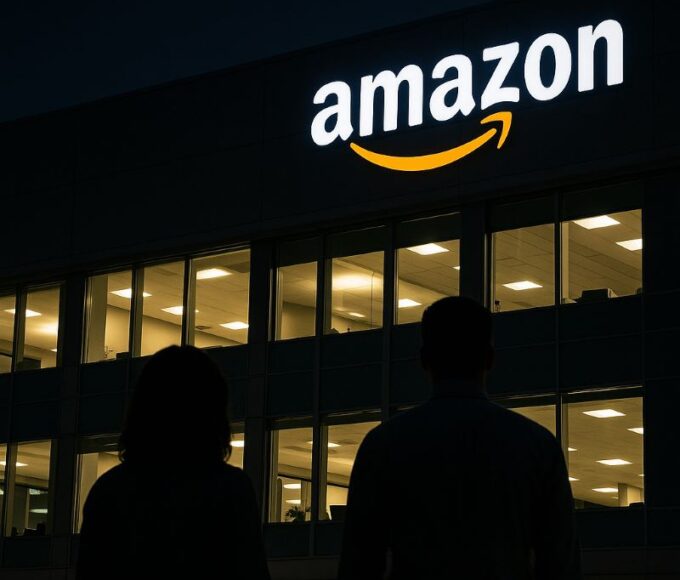The United States on the west coast of the Atlantic is caught in a frenzy of eggs: sky high priced eggs, which have doubled in price, are sold out early in the morning; Smuggling eggs from Mexico and Canada into the United States has become a popular method of smuggling; In order to avoid the “assassin” of eggs, some American people have started to live a retro lifestyle – bartering. Before the avian flu, the price of a dozen eggs (12 pieces) was around $2-4. Now it has at least doubled, “Elizabeth, who lives in Wisconsin, central northern United States, complained to Southern Weekend reporters. On March 21, 2025, she went to a supermarket to purchase eggs. Surprisingly, the price of 18 eggs per pallet suddenly dropped to $9.19. Just three days ago, the price of the same type of egg was as high as $13.5.
The sudden drop is unbelievable, “Elizabeth sighed. Due to the latest record breaking outbreak of avian influenza, the inventory of laying hens in the United States has significantly decreased, and prices have also skyrocketed. Official data shows that in February 2025, the average price of a dozen large A-level eggs in the United States was $5.9, an increase of 10% compared to the same period in 2024. In the Midwest region of the United States, the average wholesale price of the same type of egg reached a record high of $8.41. Since the end of February, with the easing of the avian influenza epidemic, the demand for egg consumption has become weak, and the average wholesale price of eggs nationwide has shown a downward trend. The price of eggs has been decreasing all along, and I am optimistic about it. I believe we have overcome difficult times, “said US Secretary of Agriculture Brooke Rollins in a media interview. But Elizabeth is skeptical about this, “The bird flu problem has not been solved, and a brief price drop does not mean that egg prices will stabilize
Smuggling eggs is more popular than drug trafficking
Starting from January 13, 2025, Elizabeth will habitually record the price of eggs every time she goes to the supermarket, with prices of $10.99, $11.79, $13.49, $15.09, $15.29. From mid January to early March, she watched helplessly as the price of 18 eggs increased by nearly 40%. In fact, there have been signs of rising egg prices in the United States for a long time. The data released by the US Department of Labor in January showed that the US Consumer Price Index (CPI) rose 2.9% year-on-year in December 2024, and egg prices surged 36.8% compared to the same period in 2023. Meanwhile, in January 2025, the average price of a dozen A-level eggs in urban areas of the United States reached $4.95, surpassing the historical high of $4.82 set two years ago and more than double the lowest price in August 2023. In some regions, the price of a box of eggs may be as high as $10. Elizabeth has always been insensitive to rising egg prices. Until the US election period, the rise in essential goods including eggs became a touchstone of American politics, frequently mentioned in various campaign speeches and press conferences.
Trump has repeatedly promised that if elected, he will quickly resolve the issue of egg prices. However, to this day, the price of eggs in the United States has not returned to its original parity level, while Trump has quietly withdrawn his previous promise. He not only attributed the skyrocketing egg prices to the Biden administration, but also shared an article defending himself on social media titled “Shut up, stop talking about egg prices – Trump is saving consumers millions of dollars”. As a cheap source of protein, eggs play an important role in the daily lives of the American people. According to the Statista database, the per capita egg consumption in the United States in 2023 is 281.3. Under the skyrocketing price of eggs, Elizabeth had to be meticulous in her calculations. To prevent the price of eggs from rising too quickly, she would stock up on two boxes of eggs whenever the supermarket had inventory.
If the supermarket only has expensive eggs left, she will try her best to reduce the use of eggs in cooking. In the small town where Elizabeth lives, with the rise in egg prices, a barter platform has directly emerged. Many people exchange fresh bread, home tutoring services, and reusable egg trays for eggs. About one tenth of the people in the town have joined the group, it’s crazy, “Elizabeth said. High stars studying at the University of California, Los Angeles on the west coast of the United States have also witnessed the skyrocketing price of eggs. A dozen A-level white eggs rose from $3.79 at the end of January to $4.99 at the beginning of March, a 30% increase. According to the smoothness of eggs, the thickness of egg whites, and the roundness and height of egg yolks, eggs in the United States are classified into AA, A, and B. Gaoxing usually purchases A-grade eggs, and by the end of 2024, you can buy 18 for $5. People who wake up early have eggs to eat, “Gao Xing joked,” I buy them before 11 o’clock on weekdays and 9 o’clock on weekends. If I go late, only more expensive eggs will be left. “Due to the shortage of egg supply, many supermarkets immediately introduced purchase restrictions. Trader Joe’s, which Gao Xing often visits, is an American chain grocery store with 597 branches across the United States. In February 2025, this supermarket will adjust the purchase limit from two boxes to one box.
As eggs have transformed into the “new aristocracy” in the trading market, some thieves have also set their sights on eggs.
In February 2025, approximately 100000 eggs loaded on a delivery truck in Pennsylvania were stolen, with a total value exceeding $40000. The police officer in charge of investigating this case, Megan Fraser, helplessly said that this was the first time in her decade long career that she had seen eggs stolen. Even more absurdly, the huge demand for cheap eggs has led to the prosperity of the ‘underground market’. The US border patrol found that more and more Americans took risks to hide eggs under the car carpet, in the spare tire, or mixed with other sundries into the United States. According to a report from the US Customs and Border Protection, from January to February 2025, US border agents seized a total of 3254 cases related to illegal egg smuggling, while there were only 134 cases involving fentanyl during the same period.
Hidden dangers of highly concentrated industries
Behind the craze of Americans for eggs is the bird flu epidemic that has lasted for more than three years. In January 2022, the US Centers for Disease Control and Prevention detected highly pathogenic avian influenza virus in wild waterbirds and commercial poultry, which subsequently swept across the United States. According to the official website of the organization, this round of avian influenza epidemic has affected 673 counties throughout the United States, resulting in the culling of approximately 166.2 million birds, including about 130 million egg laying hens. According to data released by the National Bureau of Agricultural Statistics of the US Department of Agriculture, the average inventory of laying hens in the United States in 2024 is 375 million, which means that the number of hens slaughtered each year accounts for 11% of the average inventory.
Since 2025, the impact of avian influenza has become more severe. In the first two months of this year alone, over 35 million laying hens were slaughtered. “Avian influenza is a difficult problem that has not been solved by human beings, and it will happen every few years. After the occurrence of highly pathogenic avian influenza, all poultry in the epidemic area must be culled and treated innocuously to block the risk of spread and variation of the epidemic.” Zheng Fengtian, professor of the School of Agriculture and Rural Development of Renmin University of China and director of the Institute of Rural Development, said that large-scale culling would quickly reduce the supply of eggs on the market, leading to abnormally high egg prices.
Avian influenza has occurred in many countries, why has it had such a profound impact in the United States? In Zheng Fengtian’s view, one major reason is the unique egg industry system in the United States. The egg laying industry in the United States is highly concentrated, with a few companies occupying the majority of the market share, which is equivalent to putting eggs in the basket of several top companies. Once an epidemic occurs, it will have a fatal blow to the entire egg supply chain, “explained Zheng Fengtian. A paper written by Jada Thompson, a poultry economist at the University of Arkansas in the United States, pointed out that since the late 1990s, in order to make up for the problem of insufficient production capacity and increase egg production, the scale of chicken farms in the United States has tripled.
According to a survey report released by WATT Poultry in 2024, which focuses on poultry industry research, the top ten egg producers in the United States raise a total of 183.41 million laying hens, accounting for over 54% of the total number of laying hens in the country. Taking Karl Mayer Foods, the largest egg producer in the United States, as an example, the company raises 44.51 million laying hens, accounting for approximately 12% of the American laying hen market. This highly centralized industrial structure has many advantages, such as modern company management and more comprehensive epidemic prevention measures, but excessive reliance on top enterprises may also lead to increased overall risks. Once a large-scale culling of avian influenza occurs, it will lead to a sharp decline in the number of laying hens and egg production, which will have a serious impact on the entire industry. Zheng Fengtian believes that in contrast, decentralized farming can to some extent avoid similar risks.
This statement was also confirmed by Elizabeth. According to her observation, small-scale farmers in the area have hardly been affected by avian influenza. Before the outbreak of avian influenza, local organic egg brands were much more expensive than eggs sold by large companies because their farms were smaller and there were fewer poultry. However, during the epidemic, they were not affected and egg prices remained basically unchanged, with only a small increase, “said Elizabeth. In addition, inflation in the United States is also a major driving force behind the rise in egg prices. “After the COVID-19, the United States has been facing a serious inflation problem, which has led to the continuous increase of feed and labor costs for chicken raising, and the price of eggs has also risen,” Zheng Fengtian said.
How to solve the egg panic
On March 21, 2025, U.S. Secretary of Agriculture Brooke Rawlings revealed that the United States has begun to import eggs from Türkiye and South Korea to ease the shortage of egg supply caused by bird flu. At the same time, the United States has also conducted egg supply negotiations with other countries. In fact, according to media reports, as early as February 2025, the official level of the United States began to send official inquiries to many European countries, including Denmark, Sweden, Finland, Lithuania and Türkiye, seeking to understand their ability and willingness to export eggs to the United States market. At the same time, the US Department of Agriculture has allocated an additional $1 billion to address the avian influenza outbreak.
Among them, 500 million US dollars will be used to strengthen epidemic prevention measures for egg farmers, 400 million US dollars will be used to compensate for the losses of egg farmers, and 100 million US dollars will be used for the research and development of vaccines and therapies. For the US government, seeking eggs from Europe at this moment is quite awkward. Since Trump took office, he has repeatedly threatened to impose tariffs on the European Union under the pretext of “taking advantage of the United States”. In addition, Trump has made no secret of his desire for the Danish autonomous territory of Greenland, and has even repeatedly threatened to seize control of Greenland through “military or economic coercion”. Faced with the Trump administration begging for eggs everywhere, some British media joked that the United States is going door-to-door begging for eggs from Europe. European citizens are even mocking on social media that the Trump administration “wants eggs while fighting a tariff war”.
On the well-known social news site “Reddit” in the United States, a Danish netizen posted 12 boxes of eggs in their fridge and left a message saying “How many states in the United States can these 120 eggs buy?” in response to Trump’s ambition to annex Greenland. In the eyes of analysts, despite the US government’s best efforts, it is not easy to pin the hope of solving the egg shortage on “imported eggs”. Faced with the help of the United States, Türkiye promised to provide 15000 tons of eggs, and the transportation of 420 million eggs will continue until July 2025. Finland has temporarily refused the US request, citing that the two sides have not yet conducted market access negotiations. Denmark, which continues to face threats, responded more tactfully.
The CEO of the Danish Egg Association, Jon Nibeli Larson, stated that although Denmark is open to exporting to the United States, there are not many eggs available for export and its long-term customers will be given priority consideration. The demand for eggs in the United States is huge, and European countries cannot fill the gap in the United States. In addition, agricultural products, including eggs, must undergo strict quarantine in order to enter the international market, and it is impossible to just talk about it, “said Zheng Fengtian. Analysis suggests that currently only 3% of global egg supply enters global trade. This is a highly localized industry, and in the short term, it is almost impossible for the United States to balance the market solely through imports, “said Murd, an expert at Rabobank.
At the same time, how to transport eggs from abroad to the United States will also be a significant challenge. Thomas Kuhl, a professor of supply chain management at the Kerry School of Business at Arizona State University, said that the United States not only needs to worry about Europe not having excess eggs, but also needs to consider how to safely transport these eggs. “There are many technologies for transporting fragile goods, but the United States and exporting countries may lack infrastructure for transporting large quantities of eggs, and transportation systems need time to adapt.” “Industrial products can increase production 24/7 through human allocation, while agricultural products are rigidly constrained by the biological cycle. Egg production needs to go through the natural cycle of mother hen breeding, growth, and egg laying, which cannot be artificially compressed. The current ‘egg shortage’ in the United States stems from large-scale culling of laying hens, and it takes at least six months from chick cultivation to egg production recovery,” Zheng Fengtian analyzed.












